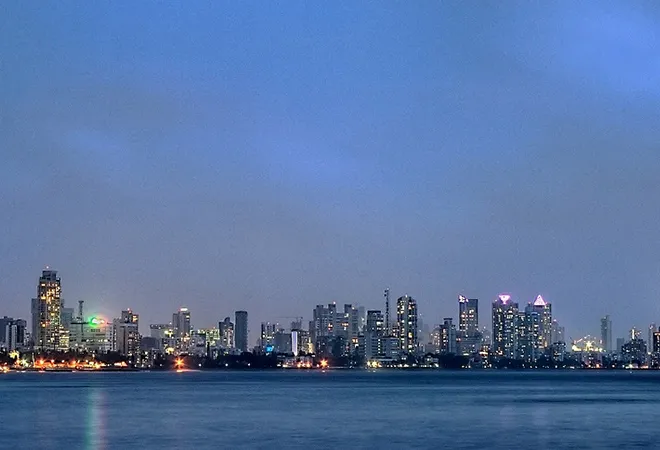
More than a decade ago, India was fascinated by the concept of Special Economic Zones (SEZs) with a view to draw in foreign direct investment, generate employment, create urban infrastructure and catapult exports. China’s efforts in this direction were spectacular. It limited the total number of SEZs, but planned to make each one of them a giant. The Government of India, however, took the route of allowing a very large number of SEZs, some of them modestly big, but most of them small. The SEZ Act 2005, in its original shape, enthused many private players to try their luck with SEZs and close to 500 projects were granted approval. However, only about 200 of them are actually operational today, the majority of them in the IT/ITES sector. Subsequent withdrawal of economic incentives with retrospective effect, change of land ratios between industrial and real estate development and further restrictive regulations on the manner of development sucked out the interest in such projects. Several of them moved to de-notify all or parts of their areas. Others felt frustrated enough to completely walk out of the SEZ concept.
Across our borders, in May 1980, China decided to develop Shenzhen as the first of its SEZs. Shenzhen then had a population of 30,000 and was the regional market town. Within a of three decades, the city has become China’s prime economic hub in the Pearl River Delta Region, just behind Beijing and Shanghai in national significance and one of the largest manufacturing bases in the world. Demographically, it is China’s largest migrant city and holds a population of more than 12 million inhabitants.
While the primary objective of SEZs was accelerated economic growth and employment through FDI and exports, the larger SEZs were also aimed at creating new urban infrastructure that would bring about urbanisation to support industrialisation.
It is widely acknowledged that every basic worker generates two to three non-basic workers that support the primary workforce with support services. Unfortunately, in a country as large as India, with a population almost matching that of China, there is no new urban development project, neither emerging out of the multi-product SEZs or outside the SEZ umbrella that can even remotely match either the size or the economy or the creative speed of China’s Shenzhen. While the global economic slowdown during the past decade contributed to the overall deceleration, the government’s own flip-flops and the irresistible desire to pour private nascent entrepreneurial wine into old, rule-bound, anti-developmental bottle deserves to be labelled one of the primary culprits.
Outside the SEZ category, the latest urban development project that has been compelled to bite the dust is the dream hill station project Lavasa. Ensconced in the hills of Pune, this was projected as the first hill station crafted in independent India, modelled on similar private developments in the United States. There appeared no reason in the beginning that the project should fail. Governmental institutions, however, by their several acts of commission and omission, ensured that Lavasa got seriously punctured. Some time back, it was reported that Hindustan Construction Company's real estate firm Lavasa Corporation was in deep financial trouble. It will face insolvency proceedings with the NCLT (National Company Law Tribunal) admitting a plea of lenders of the debt-ridden realty firm.
Lavasa was initiated following the Government of Maharashtra’s policy and regulations for new hill stations. A total area of 23,000 hectares comprising 18 villages was notified for the city of Lavasa and 10,500 acres were acquired. The master plan for the city, prepared by an internationally reputed planning firm, envisaged a population of 240,000 over an area of 12,500 acres. Out of this, 1,800 acres have been actually developed with support city infrastructure, over 2,200 apartments and villas, hotels and other city amenities and services. All this infrastructure is in Dasve – the first and only town built out of the five planned.
Things began to go wrong when a Ministry of Environment notification directed the Company to stop work. By the time the Government made up its mind to allow resumption of development, serious damage had been done. "The consequent delay of 1.5 years in obtaining clearances affected the project and brand Lavasa in many ways. Operations slowly came to a stand-still due to paucity of working capital and caused Lavasa's investors and partners to also step back or defer their investment plans," HCC said. The Government of Maharashtra jumped in to strike an additional blow by withdrawing the company’s Special Planning Authority (SPA) status. This had allowed it speed by providing ease in planning approvals. Today, some 10,000 people, who have moved into Lavasa, are trapped in an uncertain future. Besides, thousands of people who have invested in Lavasa have no idea what to do with their properties. Lavasa is now left with the struggle to repay its Rs 4,150 crore debt. Any new investor looking to take over and revive the project may require pumping in a starting sum of more than $ 1 billion. Unfortunately, the outside environment looks very unfavourable with a surfeit of distressed sellers and a shortage of buyers.
The myopic view about the future of such projects could be that they were private initiatives, designed like any other, for private profit. Hence, while any failure is regrettable, it is in the nature of private enterprises that they have an element of risk and a large number of such initiatives will fail. There is, therefore, no real cause of alarm. This, however, would be the most unfortunate view. Urbanisation the world over has been a necessary ingredient for rapid economic growth. India is set on the path of urbanisation. However, it is not being supported by infrastructure that would catalyse urbanisation. This is resulting in excessive demographic concentration in select urban locations, running down their infrastructure and sustainability. Clearly the country needs more viable cities.
The invitation to private sector to participate in the process of urbanisation was encouraged by the Centre as well as several State governments. This was because such projects require huge investments and a high order of entrepreneurial skill.
While the governments were clear in their objectives, the enormity of such projects and the inescapable and integral role of the government in these projects went unappreciated. These large projects are land and infrastructure-intensive. They, therefore, get heavily impacted by the role of the Centre and even more so by State governments (departments of Urban Development, PWD, Power, Water) to mention only the key departments.
Such projects are also invariably the focus of NGO ire and farmers’ grievances. They, therefore, face a barrage of litigation seeking to derail the project. If this gets combined with either government apathy or outright hostility, there is no way any of these projects would see the light of the day. Within government, bureaucratic support is difficult to come by because of the ease with which individuals can be hurt with allegations of corruption and favouritism. The best way, therefore, appears to be a multi-departmental governmental body authorised to give all clearances.
Governments must remember that these large urbanisation projects fall in a category of their own. They are nation building efforts and not the average profit-oriented venture. They are too large and complicated to stand entirely on private legs. Hence, governments need to protect them and support them. Governments must transcend the role of the regulator to be the hand-holder. If they are shy of such a role, they need to scrap programmes and schemes that promote building cities through the private sector.
The views expressed above belong to the author(s). ORF research and analyses now available on Telegram! Click here to access our curated content — blogs, longforms and interviews.




 PREV
PREV


